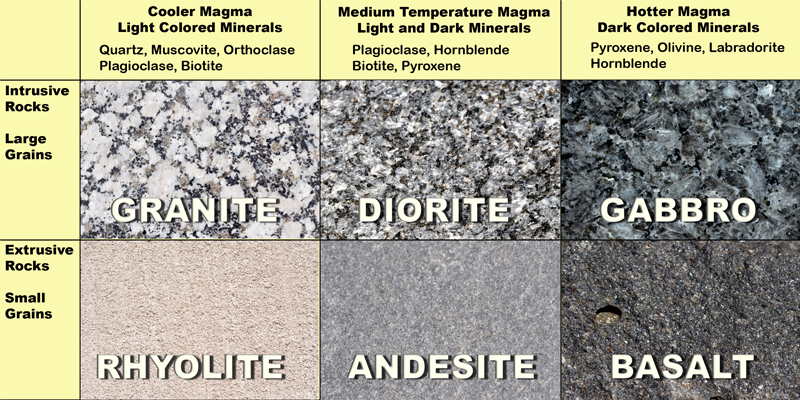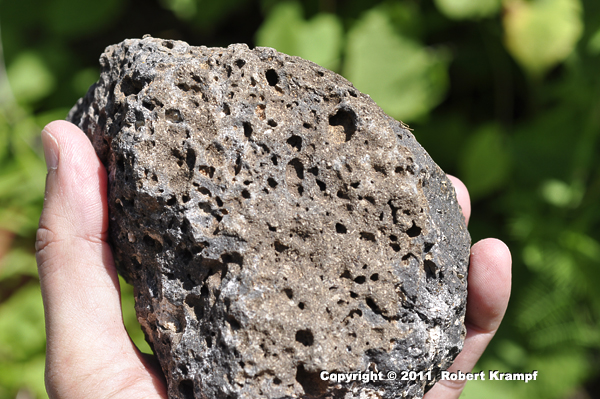When we identified minerals, we had very precise tests to perform and specific properties to measure. Identifying igneous rocks is not that simple. They are classified by what minerals they contain, and the size of those mineral pieces, which are called grains. This creates a system that is not incredibly precise. For example, to be classified as granite, a rock must have at least 10% quartz. But what if it only has 9.99% quartz? For that matter, how can you measure exactly what percentage of a rock is quartz? The different classes of igneous rocks grade into each other, with granite merging smoothly into diorite without a sharp difference.
There are over 700 different kinds of igneous rocks, but geologists group them into a few general categories. Using the chart below, you can easily identify most of the igneous rocks you find.

There are a few types of igneous rocks that don't fit into this chart, including volcanic glass and rocks with a large number of gas bubbles.

Obsidian
Obsidian is formed when very hot lava cools so quickly that there is no time for mineral grains to crystallize. Instead, the lava cools into glass with no crystalline structure. Obsidian us usually dark, but can range from black to light brown in color, depending on what chemicals it contains.

Scoria
While it is underground, magma contains dissolved gases. When it reaches the surface as lava, the gases escape, just like the bubbles you get in a glass of carbonated soda. As the lava starts to cool, it gets thicker as tiny grains crystallize. The thicker lava causes the tiny bubbles to combine into larger bubbles and traps them, forming scoria.
